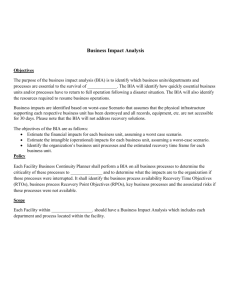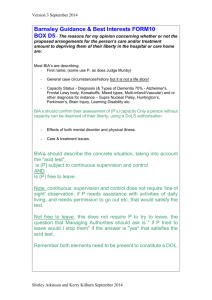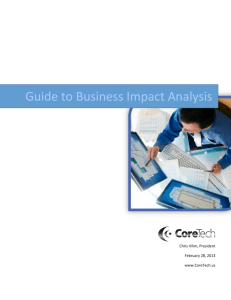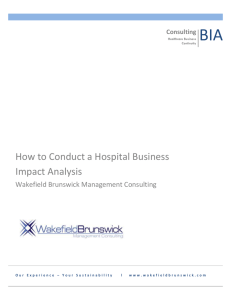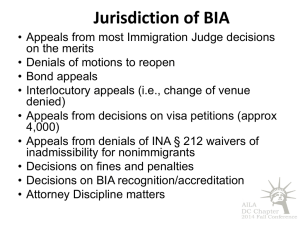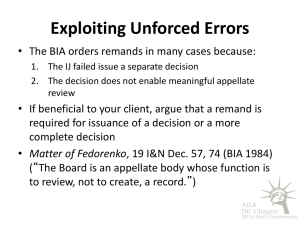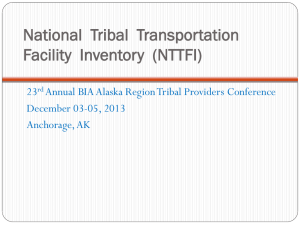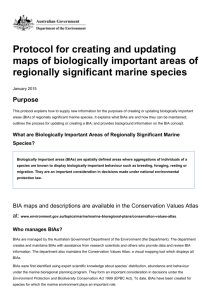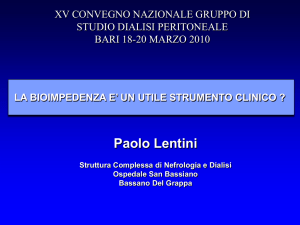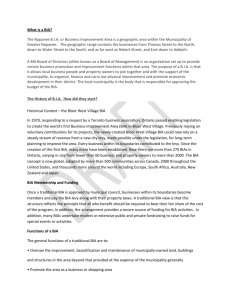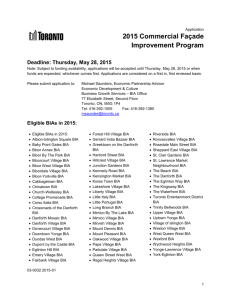Budget Impact analysis and *Return on investment*
advertisement
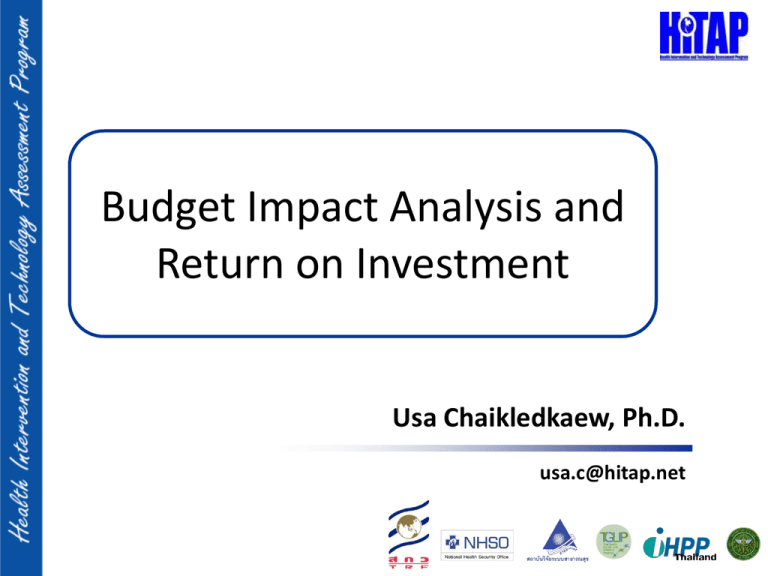
Budget Impact Analysis and Return on Investment Usa Chaikledkaew, Ph.D. usa.c@hitap.net Outline Budget impact analysis (BIA) Return on investment (ROI) 2 BUDGET IMPACT ANALYSIS (BIA) 3 Definition of BIA 4 Budget Impact Analysis (BIA) is an essential part of a comprehensive economic assessment of a health care technology The impact of implementing the intervention on healthcare budget and on other constraints should be clearly and separately identified. Increasingly required, along with economic evaluation (EE), prior to formulary approval or reimbursement. 5 Adapted from: Brosa M, Gisbert R, Rodrez Barrios JM y Soto J. Pharmacoeconomics Spanish Research Articles 2005; 2: 65-79. The Purpose of BIA 6 To estimate the financial consequences of adoption and diffusion of a new health care intervention within a specific health care setting given inevitable resource constraints To predict how a change in the mix of drugs and other therapies used to treat a particular health condition will impact the trajectory of spending on that condition To use for budget planning, forecasting and computing the impact of health technology changes on premiums in health insurance schemes Users of BIA 7 Those who manage and plan for health care budgets • • • • • administrators of national regional health care programs administrators of private insurance plans administrators of health care delivery organizations employers who pay for employee health benefits Each has a need for clearly presented information on the financial impact of alternative health care interventions. BIA and EE 8 BIA should be viewed as complementary to EE, not as a variant or replacement. EE evaluates the costs and outcomes of alternative technologies over a specified time horizon to estimate their economic efficiency. BIA addresses the financial stream of consequences related to the uptake and diffusion of technologies to assess their affordability. BIA and EE 9 EE and BIA share many of the same data elements and methodological requirements. However, there are important differences in how these data and methods are incorporated into the models because of their different intended use. BIA VS EE Details BIA Concept Objective Affordability Financial impact of introducing a technology Study timeframe Health outcomes Perspective Budget holder preference (usually 1-5 years) Excluded Budget holder/Manager Economic evaluation Value for money Economic efficiency of alternative technologies Preferably lifetime Included (e.g. qualityadjusted life years) Society/Third payers/other 10 BIA VS EE Details Comparison Study population Discounting Presenting result BIA Scenarios in which they can design the degree of incorporation of the new technology in the population with a mixture of utilization Open cohort Not recommended Total and incremental annual costs Generalization of Inadequate: impact studies results budget are designed to specific circumstances Economic evaluation Specific technologies: a new technology will be used throughout cohort intervention Close cohort Highly recommended Incremental cost per unit of health outcome achieved Possible, with limitations 11 What is the budget impact methodological specification? Presented the budget impact in a manner that is relevant to the decision problem and the needs of the intended decision maker Disaggregate and reflect the costs to all parties as a result of implementation of the intervention • government and social insurance budgets • households and direct out of pocket expenses • third-party payers • external donors, etc. Annual budgeting is preferable 12 Example: BIA on Stem Cell Transplantation for Severe Thalassemic Patients 13 RETURN ON INVESTMENT (ROI) 14 What is ROI? A financial measure to determine benefit to the organization A form of cost-benefit analysis that measures the costs of a program versus the financial return from that program 15 Why is ROI important for decisions? The financial impacts of the implementing the interventions Effectiveness of interventions in terms of their financial return 16 ROI Analysis A measure used to: • Evaluate the efficiency (net financial benefits) of the investment • Compare the efficiency of different investments Formula: Total benefits – Total costs Total costs For instance, a $100 investment earns $150 in benefit program, then ROI = 50% 17 What is the ROI methodological specification? ROI is useful when costs and benefits are tangible. It is usually calculated from the perspective of the organization implementing the program. An analysis over a year, future costs and benefits need to be discounted. 18 Considerations for using ROI Many costs and benefits in the future are difficult to quantify. Benefits in health intervention (e.g. case averted and QALY gained) are not easy to value in the monetary unit. ROI could not value the essential of public health interventions. 19 Thank you very much, any question? usa.c@hitap.net 20
